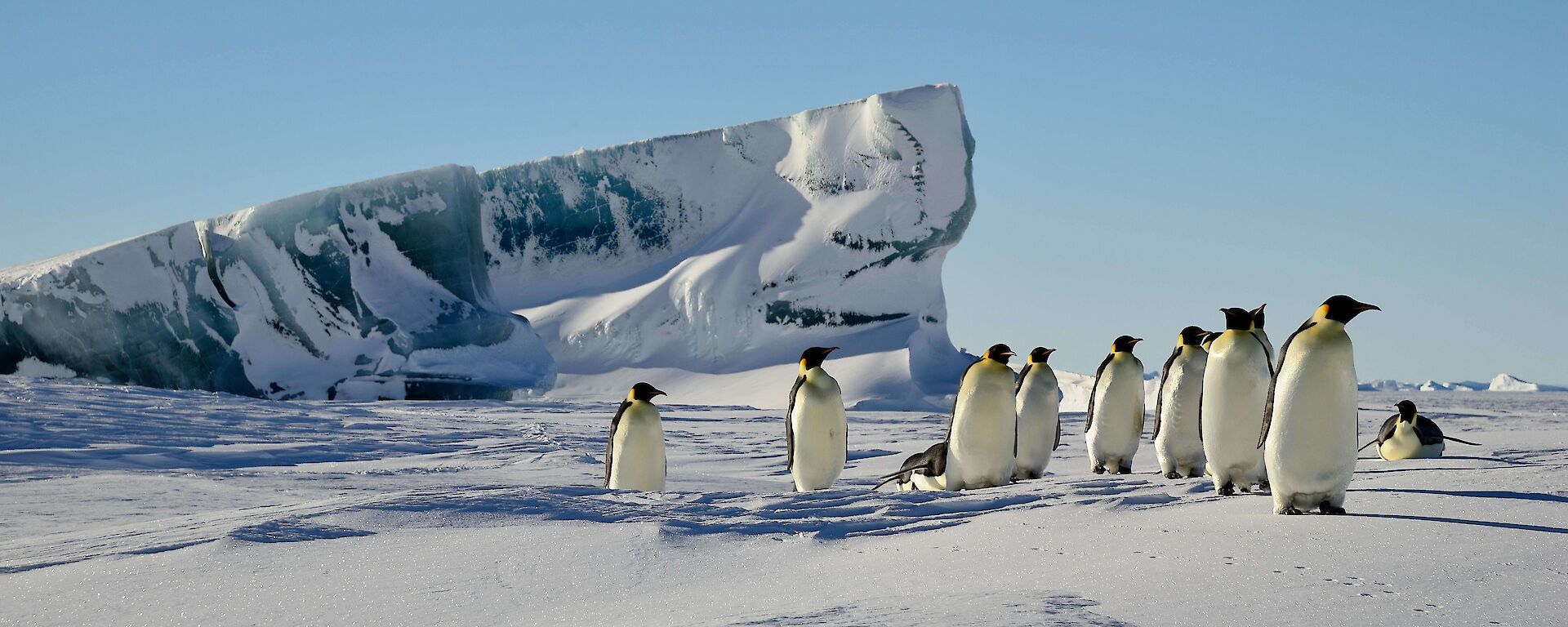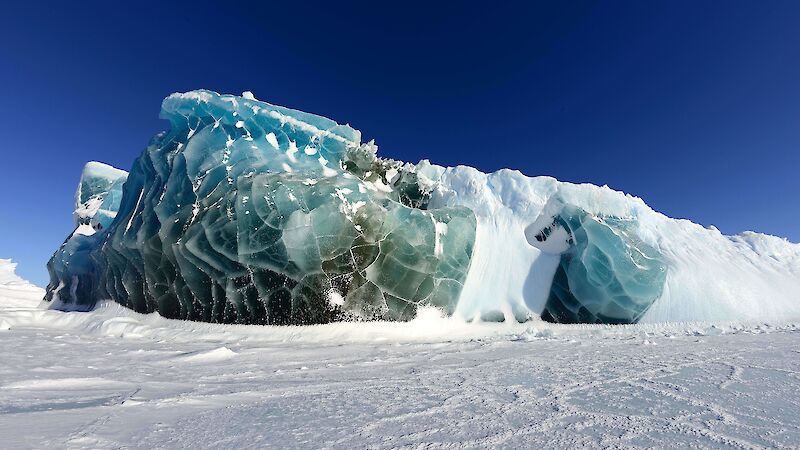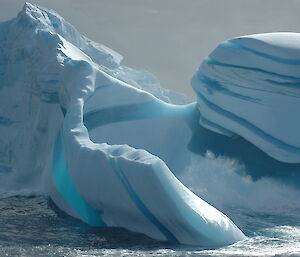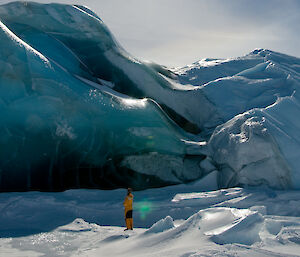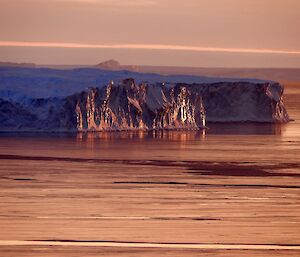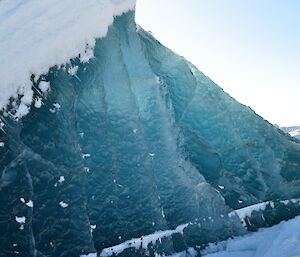Why icebergs can have colours and stripes
Icebergs are formed from the glacial ice that has built up from snow falling on the Antarctic continent over millennia. This ice consists of pure fresh water. The ice flows slowly to the coast and breaks off either from glaciers or from ice shelves. Because the ice shelves are very thick and are floating, the seawater beneath them interacts with the glacial ice.
As seawater is drawn deep under the ice shelves by the oceanic currents, it becomes supercooled. Under certain conditions it can freeze to the base of the ice shelf. Because this ice is formed from seawater, it differs from the freshwater ice of the ice shelf. Often, the frozen seawater contains organic matter and minerals, causing it to have a different colour and texture. Thus icebergs broken off from the ice shelves may show layers of the pure blue-white glacial ice and greener ice formed from frozen seawater. As the bergs become fragmented and sculpted by the wind and waves, the different coloured layers can develop striking patterns.
Pure glacial ice, too, can exhibit striking colour patterns. This is thought to be a result of melting that can occur on the continent before the bergs break off. Crevasses high on the Antarctic plateau can fill with melt water and then refreeze, producing layering of blue ice within a white ice matrix. After calving, they begin eroding and the alignment of the stripes can become irregular, leading to icebergs with spectacular appearances.
Dr Steve Nicol

